Today’s environment of increased risks requires protective design and risk management for most facilities. This article presents an overview of facility risk assessments and focuses on the critical area of window hazard mitigation.
Because glass often causes the majority of injuries from a bomb blast, mitigation can significantly reduce those risks for employees or building visitors.
The Basics of Facility Risk Assessments
All facilities face some risks associated with natural events, accidents, or intentional (criminal or terrorist) acts to cause harm. Regardless of the nature of the threat, facility owners have a responsibility to manage associated risks. Introducing properly designed hazard mitigation measures can both protect occupants and significantly reduce facility recovery by maintaining the facility’s envelope during an event.
The best course of action is to start with a multi-hazard risk assessment performed by a qualified security professional. The following are descriptions of assessment types:
- Threat Assessment: A threat assessment evaluates the potential aggressors and the type of tactics they are most likely to employ. Consider a complete spectrum of threats including natural (earthquakes, floods, etc.) and manmade (accidents, terrorist acts, etc.). For threats involving explosives and other weapons of mass destruction, quantify the type and/or size of device. The result of the threat assessment is a list of credible threats and/or attack scenarios.
- Physical Security Assessment: A physical security assessment consists of an evaluation of the existing countermeasures. These include fixed countermeasures (i.e., locks and barriers) as well as operational and procedural countermeasures. Include suggestions for upgrades to existing countermeasures to meet a protection goal. Often, a physical security assessment uses a set of minimum standards to evaluate existing conditions and make upgrade recommendations.
- Vulnerability Assessment: A vulnerability assessment quantifies the potential impact of specific threat scenarios based on existing or planned conditions. The vulnerability assessment should evaluate potential damage to assets and injury to people from each attack scenario. This provides a baseline for determining the potential benefits from security and structural upgrades. The vulnerability assessment may include detailed analysis of the loss from an explosive, chemical or biological attack. You will need professionals with specific training and experience in these areas to perform these detailed analyses. Figure 1 shows a sample of the type of output you can generate from a detailed explosive analysis. It shows the potential damage to a facility from an explosive attack before and after a window mitigation project. You can model similar assessments for other risks and mitigation projects.
- Risk Assessment: A risk assessment incorporates the threat assessment, the physical security assessment and the vulnerability assessment to evaluate the potential risks associated with each threat. The objective of the risk assessment is to pair the impact of loss with vulnerability to help the owner evaluate the acceptability of different levels of overall risk. This allows someone to effectively manage their risks. A risk assessment may or may not include detailed vulnerability assessments experts perform (a blast assessment, chem/bio assessment, etc.). Obtaining these detailed assessments may be part of the recommendations from a risk assessment. For planned facilities, you can use a risk assessment to help develop design criteria.
You can apply threat/vulnerability assessments and risk analysis to any facility or organization. Most risk assessments include the following steps:
- Identify the asset(s) to protect
- Perform a threat assessment to determine potential threats
- Perform a vulnerability assessment to evaluate the existing hazard mitigation measures
- Quantify the level of risk associated with each threat or asset
- Identify potential upgrades to reduce risks
- Re-evaluate risk reduction based on potential upgrades
You should repeat the risk assessment process every three to five years, or when significant changes occur. This could include changes in facility occupancy or mission, neighboring facilities, crime rates in the area, etc.
While the best defense against death and injury from hazardous events is prevention, this is not always possible. Therefore, we must learn how to mitigate the hazards associated with specific events.
Mitigating the Risks from Hazardous Window Failure
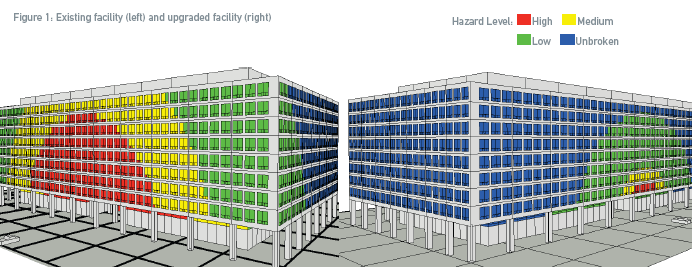
Hazardous glass fragments are undeniably a major source of injury and death in many explosive attacks. A total of 759 people were injured in the bombing of the A.P Murrah Federal Building in Oklahoma City. Of those, 319 were inside the building and 440 were outside or in neighboring buildings. An Oklahoma State Department of Health survey found among the 405 injured respondents, 66 percent attributed their injuries to flying glass or falling on broken glass.
The department also found slightly more than five percent of the people injured from hazardous glass and wall fragments died. Ten percent of those exposed to high-hazard glass or wall fragments suffered serious injury with permanent disabilities and 85 percent sustained serious but recoverable injuries. Not only that, but glass-related injuries aren’t limited to the targeted facility. There was widespread glass breakage for more than a mile around the Murrah Building.
Mitigating the risk of flying glass can significantly reduce injuries from a blast. The first step is to ensure a balanced window system design. For the overall system to provide adequate protection, the glazing, frames and anchorage must all be able to survive the blast loading. If any one part of the system fails, the entire system fails. Similarly, the supporting wall must be able to handle the loads the window system transfers to it. If the window system has a higher capacity than the supporting wall, when the wall fails it may blow the entire window system into the facility.
The United States General Services Administration developed a method of evaluating the protection various window configurations offer. This National Standard is similar to the rating schemes the British use. The standard uses five performance conditions to indicate the location of fragments and/or shards after failure. We have defined those performance conditions in Figure 2.
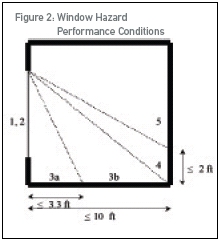
Most highly critical at risk facilities such as a military headquarters or power plant operations room would require a performance condition of 1. Childcare centers require a performance condition of 2 or better. Major office buildings or courthouses typically require a performance condition of 3.
There are several options for increasing the capacity and/or reducing the hazards from the glazing portion of a window system. These include: selecting an appropriate type of glass, applying security window film, installing blast curtains/shields and using laminated glass.
Types of glass include:
- Plain-float annealed glass is the most common glass type commercial construction uses. It has an ultimate design stress of 4000 psi and is the most hazardous.
- Heat-strengthened glass is partially tempered, which increases the ultimate design stress to 7600 psi. It gives a higher strength and slightly reduces the hazard.
- Thermally-tempered glass is fully tempered glass, which increases the ultimate stress to 16000 psi. It fails in small cube shaped fragments that are the least hazardous.
Tests have shown applying security window film on the interior glazing surface can significantly reduce the hazard. Security windows film is typically 4, 6, 7, or 11 mils (1/1000th of an inch) thick. There are four basic methods to apply this film, which we illustrate and explain in Figure 3.
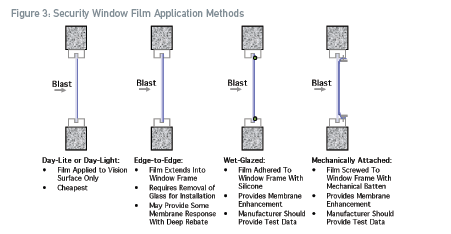
Daylight installation is the lowest cost and mechanically attached is generally the highest. The range is roughly $6-8 per square foot for daylight installation and $10-20 per square foot for mechanically attached.
Tests also show that engineered laminated glass can provide very high levels of protection at blast pressure/impulse levels far greater than blast curtains and/or films. Manufacturers are also developing new technologies to reduce the hazards from an explosive event. These innovative and cost-effective products and procedures will significantly enhance our ability to protect people. Include a qualified blast and security specialist in the earliest stages of project design to help you obtain the desired levels of protection and to minimize the impact on architecture and cost.
For more information on protecting facilities from blast, wind and other hazards visit the following websites:
This article was published in the Disaster Resource GUIDE for Facilities (Fall 2006).
Recommend0 recommendationsPublished in Physical Infrastructure
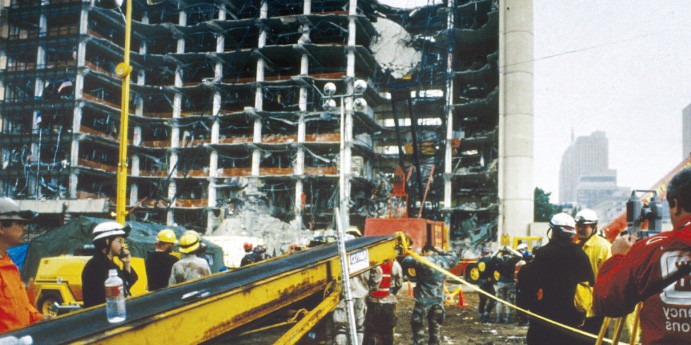
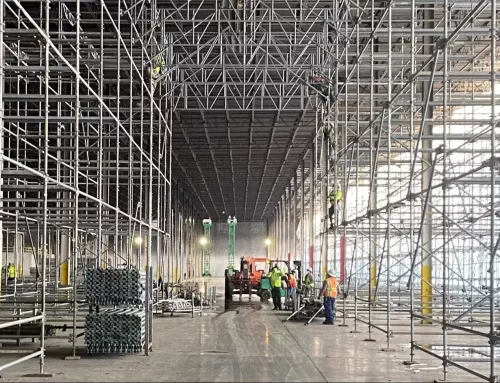

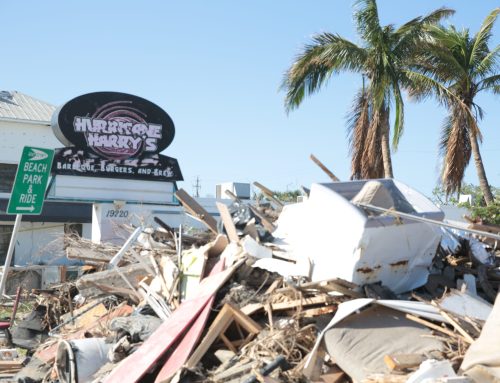


Leave A Comment
You must be logged in to post a comment.